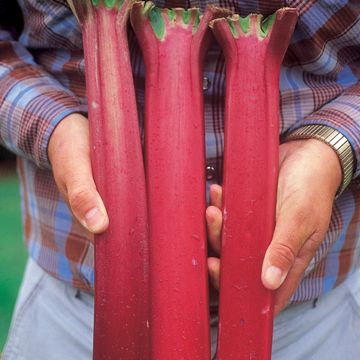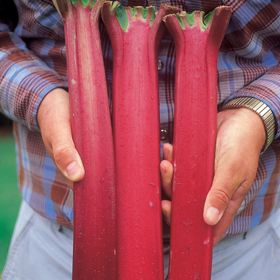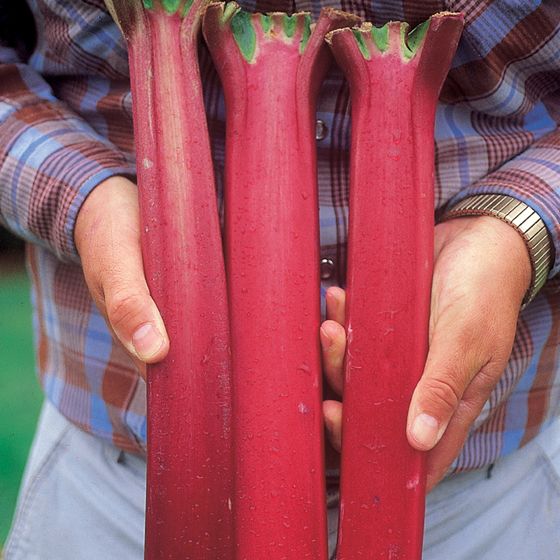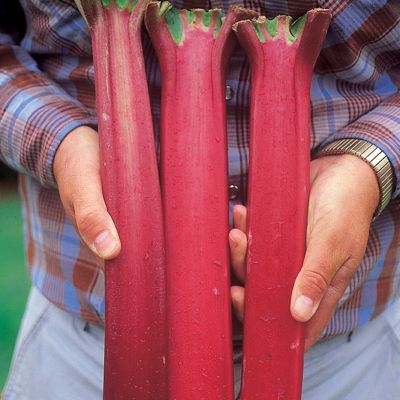Valentine Rhubarb Plant
Description
Precocious bearer of earlier stalk harvests. Vigorous plants with high yields, with few or no seed stalks! This sweet, low-acid variety is perfect for zesty sauces and pies that require less sugar. Cold-hardy and heat-tolerant. Harvest in May. Self-pollinating.
Characteristics
| Bloom Color | Yellow |
| Fruit Color | Red |
| Hardiness Zone Range | 4 - 9 |
| Pollination | Not Required |
| Ripens/Harvest | May |
| Shade/Sun | Full Sun |
| Soil Composition | Loamy |
| Soil Moisture | Well Drained |
| Soil pH Level | 5.5 - 7.0 |
| Taste | Sweet |
| Texture | Crisp, Firm |
| Years to Bear | 1 - 2 |
Zone Compatibility
This Variety's Zone Range
4 - 9
My Hardiness Zone
6B
Based on your zip code, 43215
Change Zip Codes
The USDA hardiness zones offer a guide to varieties that will grow well in certain climates. Each zone corresponds to the minimum winter temperatures experienced in a given area. Make sure that your hardiness zone lies within the zone compatibility range of this variety before ordering.
Pollination
Pollination is not required for this variety.
This variety does not require pollination to produce a harvestable crop.
Tools & Supplies
Planting & Care
Learn all about how to grow rhubarb plants in The Growing Guide. An entire section of our website dedicated to your growing success.
Questions & Answers
Customer Reviews
More items we think you'll love!
 On Sale
This variety is compatible with your location
On Sale
This variety is compatible with your location
 On Sale
This variety is compatible with your location
On Sale
This variety is compatible with your location
 On Sale
This variety is compatible with your location
On Sale
This variety is compatible with your location
 On Sale
This variety is compatible with your location
On Sale
This variety is compatible with your location
 On Sale
This variety is compatible with your location
On Sale
This variety is compatible with your location
 On Sale
This variety is compatible with your location
On Sale
This variety is compatible with your location




